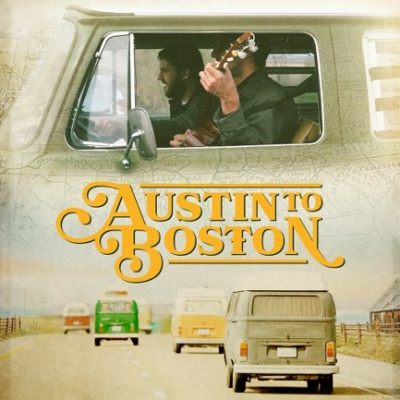By Jeffrey Trainor (The Cascade) – Email
The sights and sounds of musicians touring has often been dramatized by the media. Yes, I am sure some big name artists do indeed “pop bottles” every night and “make bank” when touring, but most struggle to fill the gas tank going from place to place. The documentary Austin to Boston aims to explore this struggle-filled counter-narrative, but in the end paints a cliché picture of the indie touring experience.
Austin to Boston’s concept revolves around the tour of four folk artists zigzagging across much of the Midwest and Eastern United States. The motorcade is comprised of British musicians Ben Howard, Bear’s Den, and the Staves, along with American artist Nathaniel Ratecliff — all of whom are coming fresh off performances at Austin’s South by Southwest music festival. Together, the groups forge their own path across the corn fields of the Midwest and through the suburban sprawl of the East Coast, with only five Volkswagen camper vans for transportation (and lodging on most nights). Along the way we see collaboration between the artists and quiet reflections by each performer, as well as a litany of shots of the open road.
The best aspect of Austin to Boston comes in the form of live performances by the artists at various venues throughout the tour. Performances such as The Staves covering Sufjan Stevens’ “Chicago,” and the whole convoy accompanying Ben Howard on stage in Boston to perform his song, “The Fear,” work to show how creative juices can flow when artists are crammed together into tight spaces for long stretches of time. Shots of the artists lounging in the vans while working on new music are also juxtaposed with more informal situations that provide a bit of relief from the heavy and weighed down concept of the tired, touring musician. These include the ladies from The Staves taking shots at a gun range — and actually enjoying it — and Ben Howard joining a pickup game of basketball in Chicago.
The most powerful section of the film comes near the middle, when the gang rolls into St. Louis, Missouri. At this point, the documentary shifts its focus primarily to Nathanial Ratecliff, and delves into the story of his life growing up in and around St. Louis. Ratecliff travels solo through the town of Hermann, Missouri, where he reflects on his childhood and discusses the death of his father, who was killed in a car accident when he was a young boy. When Ratecliff reaches the intersection where his father was killed, he explains how the weight of his personal struggles has become the fuel for his song-writing. This makes up one of the only legitimately touching and profound moments of the documentary.
Though Ratecliff’s account brings some solemnity to Austin to Boston, the downfall of this documentary is the predictability and triviality of the entire concept. Every indie musician and hipster cliché you can think of is present: baggy sweaters, sleeping in vans, jam sessions around massive campfires, people questioning their profession and why they are making music, homesick artists questioning what home really is — it’s all there. These clichés end up making the movie feel forced. It is also evident that the situation was not a natural one, and the way they were interacting was not for practical reasons, but more for the sake of the film. For example, the route they take is highly redundant and could have easily been reduced with better planning. If they truly were indie as they claim, they would want to spend the least amount on gas possible. The concept of only taking camper vans feels forced, and makes it hard to connect with the people in the film on a more personal level.
The film wanders from place to place, tripping over itself and repeatedly displaying the same ideas and scenes in different ways. There is a conscious effort to make Austin to Boston feel “hipster” and “indie,” but all it does is leave the film feeling more pretentious and dishonest than it could have been. You will probably be entertained if you are a fan of any of the artists featured in Austin to Boston, but if you are unfamiliar with them, the film will ultimately leave you feeling like you’ve wasted your time.


